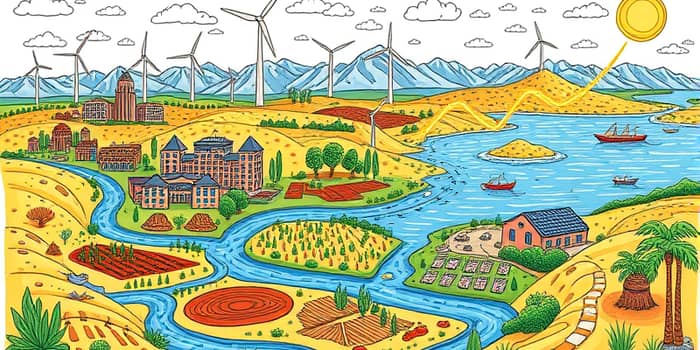
As the world hurtles toward July 24—Earth Overshoot Day 2025—we confront a stark reality: humanity is consuming more than the planet can renew. This imbalance presents one of the most pressing investment dilemmas of our time. Awareness of this looming crisis is the first step toward crafting solutions that protect both financial returns and planetary health.
Investors who recognize resource scarcity not as a threat alone but as an incentive for innovation will be best positioned to thrive in an era of tightening supplies and rising costs.
Global resource consumption has soared to 100 billion metric tons annually, with nonrenewable resources accounting for 75%. At the current pace—2.3% growth per year—material extraction is set to reach 160 billion tonnes by 2060. These numbers underscore a simple fact: our demand trajectory is unsustainable without transformative change.
Key drivers fueling this surge include:
Exceeding Earth’s annual ecological budget by late July each year reminds us of a ticking clock—and a call to action.
Water, food, energy and raw materials are the pillars of our global economy—and they’re all under stress.
Water scarcity affects over 2 billion people lacking safe drinking supplies, with demand set to outstrip availability by 40% by 2030. In agriculture, shrinking water reserves already threaten yields and fuel price volatility.
Food security faces its own crisis: 295 million people endured acute hunger in 2024, driven by conflict, economic shocks, and climate extremes. Meanwhile, one third of all production is lost or wasted, amplifying stress on land and supply chains.
Industry-wide, 91% of firms cite raw materials, energy, and labor as sources of scarcity, provoking 37% to bear higher costs and 27% to grapple with supply chain disruptions. This scarcity premium is rippling through consumer prices and profit margins alike.
Every sector confronts unique challenges—and investment pathways:
These shifts point to sectors ripe for capital allocation—where impact aligns with potential returns.
Astute investors are already pivoting toward resource-conscious approaches. Key tactics include:
By embedding data-driven, forward-looking strategies in due diligence, investors can anticipate scarcity-induced headwinds rather than be surprised by them.
The United Nations’ Sustainable Development Goals provide a compass for channeling capital toward SDGs 2, 6, 7, 12, and 13. Partnering with corporations and policymakers on smart trade facilitation, anti-corruption measures, and transparent reporting creates fertile ground for sustainable projects.
Investment success in the coming decades will hinge on an ability to steward finite resources responsibly. By championing circular economy and sustainable growth, investors protect returns and contribute to a stable, equitable future.
Resource scarcity need not spell doom for portfolios or communities. Instead, it offers a clarion call: to innovate boldly, invest wisely, and ensure that prosperity endures for generations to come.
References





